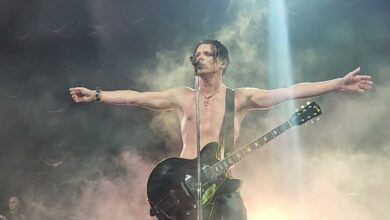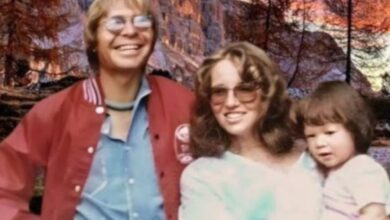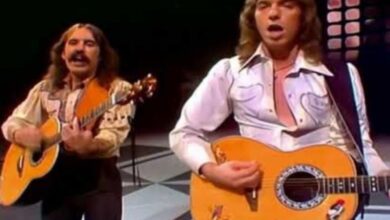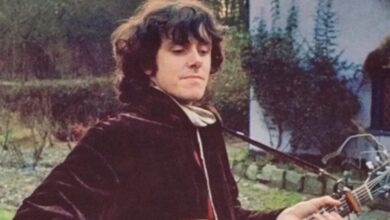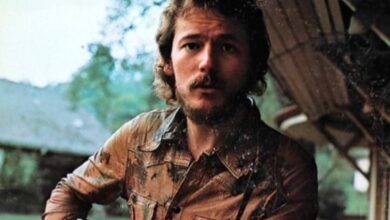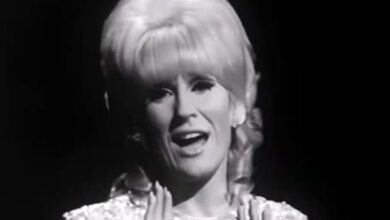When 30 Musicians Took Over Paris to Honor Freddie Mercury’s Genius
On September 9, 2025, the streets of Paris turned into an unexpected stage for one of the most memorable performances the city has ever witnessed. More than thirty musicians and singers joined forces in a meticulously prepared flashmob to bring Queen’s legendary “Bohemian Rhapsody” to life. Pianist Julien Cohen, the mastermind behind the spectacle, captured the entire moment and released it online, where the video quickly went viral, racking up hundreds of thousands of views overnight. What made it remarkable was not just the flawless performance but the way it blended seamlessly into the city’s daily rhythm. Ordinary life paused as an ordinary square became the heart of a rock opera.
The event began quietly with three singers leaning out of a café window to deliver the opening harmonies. Their voices floated into the square, catching the attention of passersby who were unsure at first of what was unfolding. Then Cohen appeared at a piano in the plaza below, his playing instantly recognizable as the song’s iconic melody filled the air. The juxtaposition of casual city life with the sudden spark of music created an atmosphere of pure surprise, instantly drawing in tourists, locals, and café-goers alike.
As the arrangement developed, new performers revealed themselves in carefully timed entrances. From balconies and doorways, more voices layered into the piece, recreating the operatic texture of the original track with precision. The square itself transformed into an acoustic chamber, the surrounding buildings amplifying each harmony. Phones emerged from pockets, recording every second, while children danced and older couples swayed in their seats, enchanted by the spontaneity of the moment.
The spectacle grew bolder when a carriage rolled into view, carrying singer Mickey Callisto, who leapt into his lines with flamboyant confidence. His theatrics injected a sense of drama into the performance that perfectly captured the spirit of Freddie Mercury. With exaggerated gestures and a commanding voice, he turned the square into a theater, adding a burst of humor and spectacle that left the crowd cheering wildly.
At the same time, the soundscape expanded with the addition of a drummer who appeared almost from nowhere, his rhythms grounding the performance in a stadium-like pulse. Soon after, the youngest star of the day, eleven-year-old “Guitar Olly,” stepped into the spotlight. His rendition of Brian May’s famous solos stunned everyone watching. Small in stature but powerful in presence, his mastery of the guitar electrified the plaza, earning spontaneous applause mid-performance.
The operatic middle section showcased the theatrical planning that had gone into the flashmob. Performers popped out from unexpected corners, gesturing dramatically as if part of an elaborate stage production. Their voices rose and fell with exaggerated passion, turning the intricate arrangement into both a musical and visual experience. Laughter and cheers blended with the harmonies, creating a playful, immersive atmosphere where the line between art and everyday life blurred completely.
As the performance transitioned into the heavy rock segment, the square erupted into controlled chaos. The pounding drums, shredding guitar, and soaring vocals shook the cobblestones beneath the feet of the crowd. Onlookers shouted along to every lyric, fists raised in time with the music, their energy feeding the performers. The sheer force of the song at that point felt less like a flashmob and more like a stadium concert condensed into the heart of Paris.
The energy was contagious, drawing strangers together in shared excitement. Café tables were deserted, tourists sang shoulder to shoulder with locals, and even passersby who had stumbled across the performance joined in, their voices swelling with the choir. In those moments, the square was no longer just a backdrop—it was alive, transformed into a communal stage powered by collective joy.
When the music softened for the song’s closing section, the transition was almost as breathtaking as the chaos that preceded it. The performers brought the volume down to a delicate hush, their voices harmonizing over Cohen’s gentle piano. The sudden calm after such intensity held the audience in spellbound silence, their attention fixed as the last notes drifted into the evening air.
For a moment, there was nothing but quiet awe, then the square exploded into thunderous applause. People shouted, clapped, and even demanded an encore, though everyone knew part of the magic of a flashmob lies in its fleeting, unrepeatable nature. The performers bowed, waved, and vanished into the crowd as quickly as they had appeared, leaving behind memories burned into the minds of all who witnessed it.
Online, the response mirrored the energy of the live crowd. The video quickly spread across social media platforms, hailed by thousands as the greatest flashmob ever staged. Viewers from around the globe admitted to being moved to tears or covered in goosebumps, unable to believe the complexity of such a performance could be executed so flawlessly in a city street. Comments praised not just the singers and musicians but the coordination and creativity behind the entire event.
Julien Cohen’s reputation soared as the architect of this extraordinary performance. Known for bringing music into unexpected public spaces, he achieved something on a new scale in Paris. The careful planning, the inclusion of professionals alongside youthful talent, and the sheer ambition of tackling “Bohemian Rhapsody” made it not just a flashmob but a full-scale artistic production in disguise.
For those lucky enough to witness it in person, it was an experience they would never forget. What began as an ordinary day became a memory etched permanently in their minds—a story to share for years. It was the perfect collision of surprise, spectacle, and timeless music, made even more powerful by the fact that it unfolded in the heart of Paris, a city already synonymous with art and beauty.
The beauty of the performance was its ability to unite people. Different generations, cultures, and backgrounds stood side by side, singing the same words, moved by the same music. In a time when the world often feels divided, the flashmob reminded everyone of music’s unique power to bring people together, even if only for a few minutes in the middle of a bustling city square.
In the end, the Paris flashmob was more than entertainment—it was a living tribute to Freddie Mercury and Queen. Fifty years after the release of “Bohemian Rhapsody,” the song continues to resonate with fresh power, inspiring not only those who grew up with it but also new generations discovering it anew. On that day in September, the genius of Mercury shone brightly, proving once again that some music never fades; it only grows stronger when shared.
